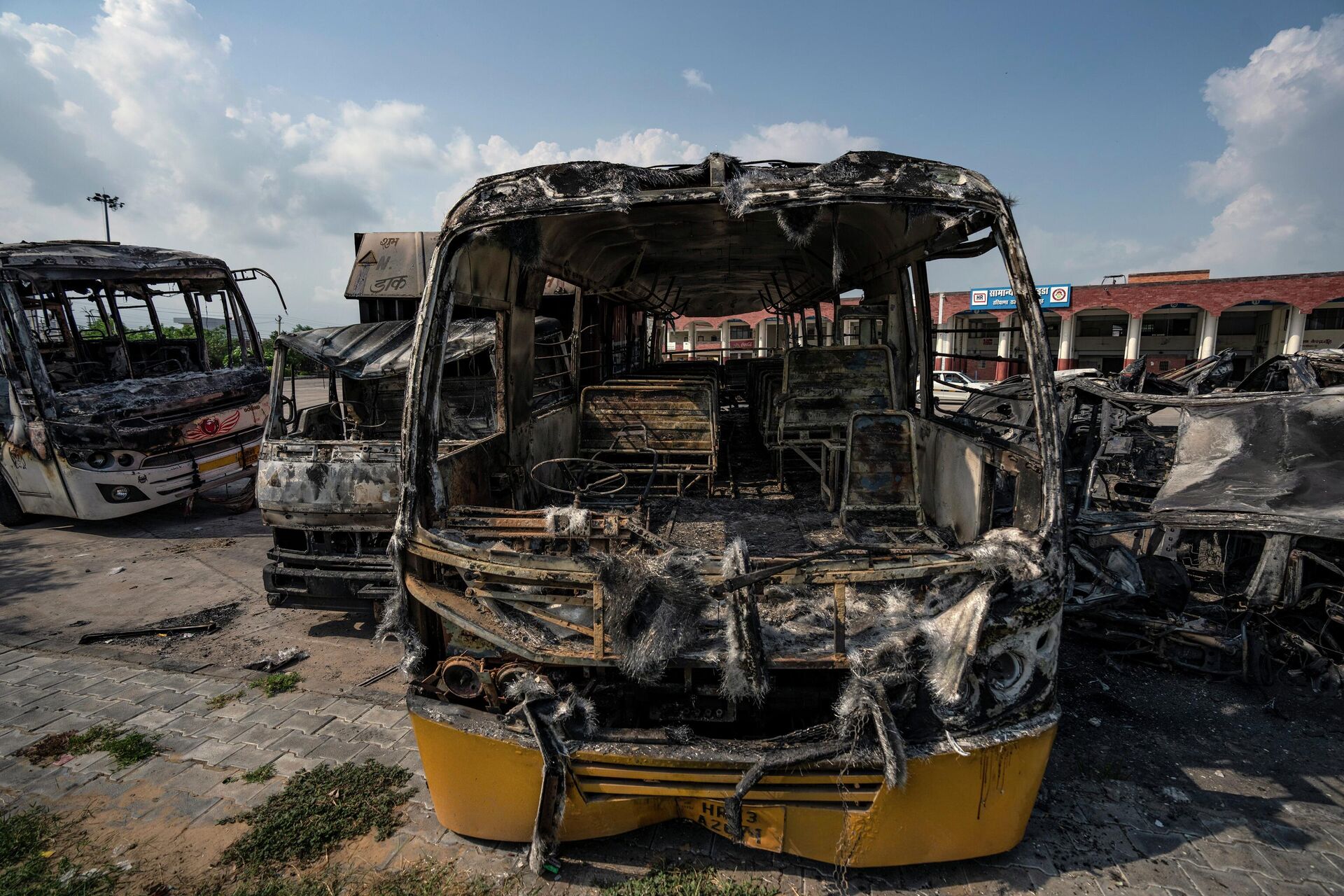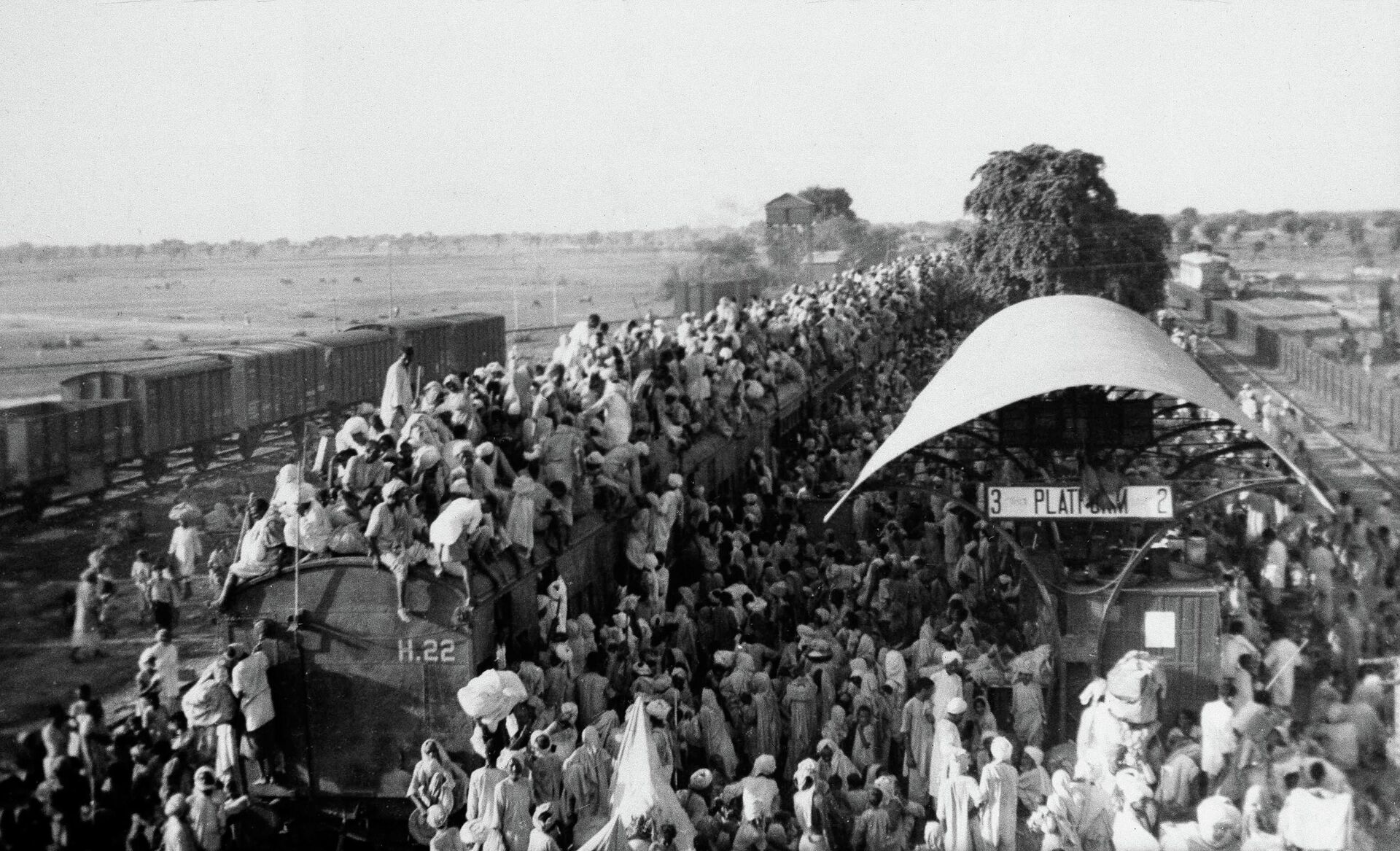Why India Needs to Contain Communal Riots

© AP Photo / Altaf Qadri
Subscribe
Violence along religious and ethnic lines could hurt the country's growth as an economic powerhouse.
India has seen religious and ethnic riots for centuries.
In the pre-Independence era, the cause for such incidents is attributed to Imperial Britain's notorious divide-and-rule policy. That reasoning by historians is not off the mark: between 1941 and 1945, when the British were busy fighting the Germany-led Axis Powers during World War II, the country saw very few riots. The British were preoccupied elsewhere even at the height of Gandhi’s Quit India movement.
Fast-forward to 1992-1993. That was when India was battered in its major cities by Hindu-Muslim riots following the demolition of the Babri Masjid in late 1992 and the Bombay blasts of early 1993. The Muslims in the commercial capital of India, now called Mumbai, protested and were, as inquiries later proved, targeted disproportionately by state forces. Bursts of such targeted attacks by the police and political entities like the Shiv Sena for two months were followed by bomb blasts organised at multiple places in Bombay by Muslim gangsters in the March of 1993 that killed more than 250 people. This led to further riots and targeting of Muslims. As a result, working-class Muslims fled their homes in the city to the suburbs which later became ghettos. Mumbra in Mumbai is one example. In 1991, it housed merely 45,000 people and now the population is upwards of a million, a brute majority of them Muslims.
Fast-forward further. To 2023.

An Indian soldier takes cover as the Taj Mahal hotel burns during gun battle between Indian military and militants inside the hotel in Mumbai, India, Nov. 29, 2008.
© AP Photo / David Guttenfelder
A group of Indian Institute of Management-Bangalore (IIMB) academics write an open letter to corporations in India not to fund hate, which, they argue, have reached nearly uncontrollable proportions thanks to the media groups they run -- especially TV channels known for whipping up communal sentiments for more Television Rating Points, or TRP.
This was a fervent appeal, and hinges on the realisation that religious -- and ethnic -- hatred runs so deep at present that unless reconciliations begin right now, we are in for a descent into chaos at a time India looks to become a superpower and attract investment across sectors, including in state-of-the-art technologies. From all such dreams will emerge nightmarish realities that are likely to hobble any progress of the nation unless we stop this internecine strife amidst a rise in polarisation along religious lines and radicalisation among warring communities.
India has learnt lessons, not just from 1992-1993 or from the Gujarat riots of 2002, but from all the preceding Hindu-Muslim altercations and riots, and yet not applied those learnings to contain them or even put in mechanisms to prevent them.
The roots of Hindu-Muslim hostilities may lie in medieval India when rulers from across its northwestern region began invading the country.
But as SR Sen writes in the April 10, 1993 issue of The Economic and Political Weekly in a paper titled ‘Communal Riots: Anticipation, Containment and Prevention’, “In the medieval era and even in Indian princely states of Hindu rajas and Muslim nawabs in modern times, there was serious militancy from time to time, but not so frequent and so many serious Hindu-Muslims riots. Feudal tyranny was equally oppressive for all common people, Hindu and Muslim.”
And so what changed with the coming of the British? Sen, who has studied Hindu-Muslim animosities closely, has an answer: in view of the small number of the British occupation forces in the Subcontinent, the British rulers found it necessary to find a supplementary measure. That was to set the Hindus and Muslims against each other. Prior to that, the minority Muslims rulers were most often mindful of the sentiments of the majority Hindus and did almost nothing to upset the caste hierarchy, which was important to the top-most sections to preserve their supremacy. Similarly, Hindu rulers saw an attack on their Muslim subjects as an attack on their kingdom.
Historians, typically, analyse the Hindu-Muslim riots starting from 1809, some fifty years after British forces established their control over India. In her stunning work, Banaras: City of Light, Diana L. Eck, writes, “In 1809, one of the worst Hindu-Muslims clashes in the city's modern history broke out when Hindus attempted to erect a small shrine on the narrow strip of neutral ground between the Gyanvapi Mosque and the Vishvanatha Temple.”
Others argue that these riots, also called the Lat Bhairo riots of 1809-11, are considered a "prototype" for later clashes between Hindus and Muslims. This was followed by several other riots that continue to this day – as the one that happened in Haryana a few days ago and in Northeast Delhi in 2020.

Burnt vehicles stand in a transport yard in Nuh in Haryana state, India, Tuesday, Aug., 1, 2023.
© AP Photo / Altaf Qadri
The major ones in undivided India that come to memory include:
the 1871-72 riots in Bareilly;
1885-86 in Karnal, Delhi and Lahore;
1891 in Palankot and Calcutta;
1893 in Bombay and Azamgarh;
1906-07 in Mymensingh;
1910 in Peshawar;
1912 in Ayodhya;
1917 in Shahbad;
1918 in Saharanpur;
1921 in Malabar; 1923 in Amritsar;
1924 in Kohat;
1926 in Calcutta and Dhaka;
1929 in Bombay;
1930 in Dhaka;
1941 in Dhaka, Ahmedabad and Bombay,
1946 in Calcutta, Noakhali, Bihar Sharif, Punjab and Delhi;
and in 1947 in many parts of India (source: SR Sen).
Hindu-Muslim hostilities heightened on the eve of the bloody Partition of 1947 that saw the British whimsically divide India. What followed was the greatest exodus in history and violence of a scale never anticipated by rulers of either India or the newly formed Pakistan.

In this Sept, 27, 1947 file photo, Muslim refugees crowd onto a train bound for Pakistan, as it leaves the New Delhi, India area.
© AP Photo
Following India’s Independence, the major ones involving Hindus and Muslims began to take place within a decade of the assassination of Mahatma Gandhi, an event that brought peace to the Subcontinent and a temporary suspension to riots. Then came the religious violence of 1957 in Ramanathapuram; of 1961 in Jabalpur; of 1969 in Ahmedabad; of 1979 in Jamshedpur; of 1980 in Moradabad; of 1983 in Nellie, Assam; of 1984 in Bhiwandi; of 1985 in Gujarat; of 1987 in Meerut; of 1989 in Bhagalpur; of 2002 in Gujarat; of 2013 in Muzaffarnagar; of 2020 in Delhi; and of 2023 in Haryana, besides countless other skirmishes.
Simply put, India has had its fair share of extremely violent religiously motivated riots (including those against the Sikhs and also the Christians). Myriad reports have been commissioned and brought out to study the causes, consequences and the reparatory measures that need to be taken so as not to bleed the country any further. Notably, former Director General of Police in Uttar Pradesh, Vibhuti N. Rai, who has great experience working in riot-hit and insurgency-affected areas, has often reminded us: “No riot can last for more than 24 hours unless the state wants it to continue.” An author, Rai has meticulously analysed several riots in modern India. His logic applies to the ongoing ethnic clashes in India’s Northeastern state of Manipur, too.
The often-side-stepped aspect about the study of riots is its collateral damage. Those who had to flee their homes often live in ghettos. These ghettos naturally become spots where people get frequently harassed by the police. Marginalisation of communities contributes to further alienation of the survivors of riots. Their efforts to wriggle out of their vulnerable existence gets accentuated by systemic discrimination at the hands of likely employers, educational institutions and almost anyone in a position of authority. Those who blame ghettoization refuse to see the discrimination that communities face in finding housing in many cities of India. For instance, in Delhi, of more than 2000 registered housing societies, there are no Muslim occupants in 1300 of them. It is heartening to know that a group of peaceniks in Delhi have launched an outreach programme called #MereGharAakeToDekho (Visit My Home, Be My Guest) for bringing communities together. That is a good start, but it is hardly enough.
One needs to track the sources of hate peddling. The reason why communal strife is spreading is primarily thanks to a section of irresponsible and pliant media that loses no opportunity for driving a wedge between communities and to paint certain groups as villains in their pursuit of majoritarian designs. They amplify even whispers of hate into shouts. Again, it should not be forgotten that prospects of electoral gains also push politicians to keep any such rancour alive and kicking.
Sriya Iyer and Anand Shrivastava had noted in their 2015 academic paper, “Religious Riots and Electoral Politics in India”, that riots influence voter behaviour. They used data on Hindu-Muslims riots in India over decades to demonstrate a link between electoral politics and communal riots.
Layers of prejudice, by means of laws like the one in Gujarat that restricts the sale of property between Muslims and Hindus, deprive minority communities of a sense of belonging. That is a crime that deserves no pardon in a democracy.
For India to progress and grow at a fast clip as an economic and political superpower, it needs to get rid of its deep-seated, toxic internal animosities plaguing the system. It also means upholding justice and fairness. Time is ticking away, but it isn't too late yet.
Ullekh NP is a writer, journalist, and political commentator based in New Delhi. He is the executive editor of the newsweekly Open and author of three nonfiction books: War Room: The People, Tactics and Technology Behind Narendra Modi’s 2014 Win; The Untold Vajpayee: Politician and Paradox; and Kannur: Inside India’s Bloodiest Revenge Politics.
